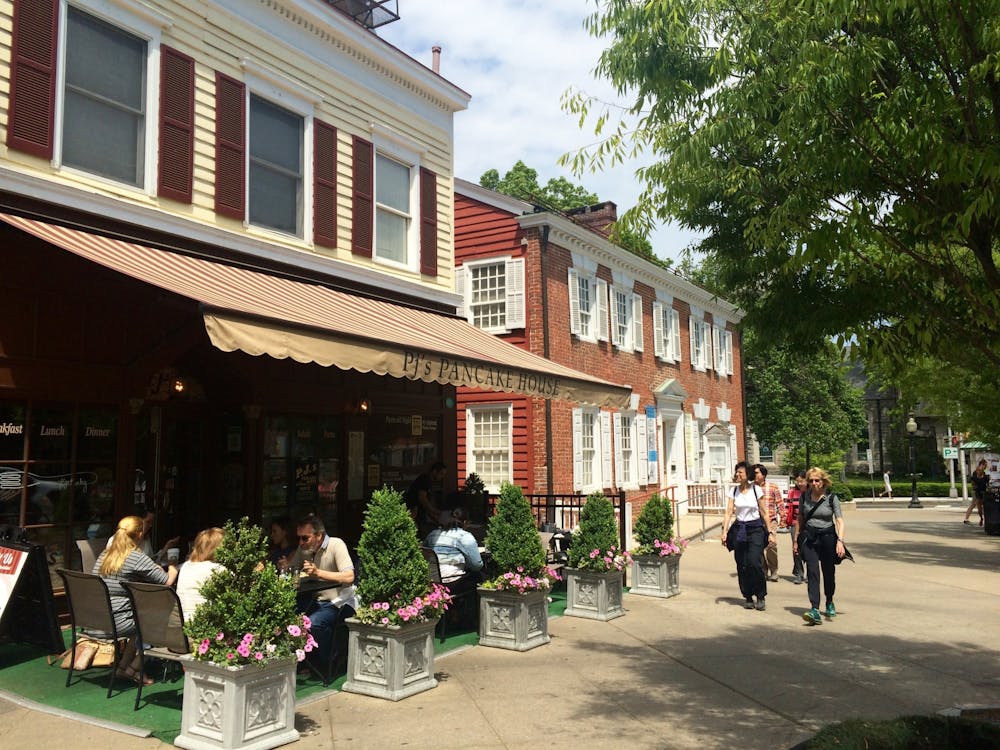On one of the busiest Saturdays in Princeton, I wandered into the A.R.Tspace Gallery, at the bottom of Palmer Square, and was surprised to find art unlike any I'd ever seen before. The sparsely hung gallery exhibited a variety of works, each unique and powerful. What was meaningful about these paintings, however, was not only their eerie beauty, but the story of the artists. A.R.T. (Aristic Realization Technologies, www.artrealization.com) is a nonprofit organization that, according to its mission statement, "enables the uncompromised creative self-expression of people with the most severe physical challenges." Most of the participants in this program are confined to wheelchairs and bereft of basic motor skills. Many lack the ability to speak. But through this unique program, they can channel self-expression into the creation of art.
A.R.T. is based on an ingenious mechanism contrived by renowned artist and project Founder and Director, Timothy Lefens. Each disabled artist is equipped with a laser strapped to his or her head. Though many of the artists are physically restricted, they can still utilize crucial decision-making skills and cranial mobility to communicate via the laser. Essentially, each artist makes choices vital to the creative process, such as canvas size, paint color, and composition. Then, it's the job of a "tracker" to bring those choices to the canvas. The process is defined by a sense of patience. The well-trained trackers know better than to revert to the "handoverhand method," whereby an able-bodied person physically guides decisions for a disabled artist. At A.R.T., the artists are in control.
A.R.T began in Northern New Jersey in 1992, and has since blossomed across the country. The organization has trained nearly 50 trackers to bring the visualizations of these disabled artists to life.
Over two years ago, Tim Lefens, approached Princeton for support. President Tilghman offered A.R.T. use of the University's art facilities in 185 Nassau during non-class hours. Since then, lead tracker Katheryn Heitman has dedicated her Saturdays to working one-on-one with the artists for an hour at a time, helping each bring his or her wildest imaginations to fruition via the laser technique.
Though the University houses this program at 185, and though the A.R.T. gallery is a five-minute walk in Palmer Square, Princeton students are relatively removed from the program's creative processes. But Barbara Vaughn Hoimes '82, Chairman of the Board of A.R.T, encourages students to get more involved and bridge the divide between the program and the University. "Princeton is in a unique position to really launch this revolutionary?program, with their links to funding foundations, corporations, and ?individuals," she said.
Those Princeton students who do want to get involved in this unique program have many opportunities to do so. Aside from needing website assistance, A.R.T. is planning to launch an initiative called the "flying eye." Vaughn Hoimes describes it as giving "wheelchair-bound students the ability to photograph things they can't access or see from their seated perspective." In its experimentation with new medium and techniques, A.R.T. needs support from the community.
As I meandered through the opening of the exhibition that Saturday, I'm embarrassed to admit my surprise at the beauty of the work. It was clear that I had harbored stereotypes about this marginalized sector of society in assuming that they could not produce advanced and sophisticated paintings. A.R.T., however, blows any preconceived notions out of the water, by arming the physically challenged with the tools they need for creative self-expression.
The walls boasted a wide array of styles: one artist depicted colorful blobs frozen in their descent from the top of the canvas, and another created a self-portrait of his own face atop Al Pacino's body. The artists, glowing with satisfaction, sat proudly in front of their beautiful paintings with their families. Admiring fans and the visionary leaders of A.R.T. circled around, full of kind words for the artists and their work.

As members of the Princeton community, we are in the unique position to participate and support A.R.T, which empowers the marginalized and inspires creative, independent thoughts from those who rarely have the opportunity to express. "No one else in the field is doing anything like this," says Mrs. Vaughn Hoimes, "and the end result could liberate this whole population of people who ?live without any means of creative self-expression."








